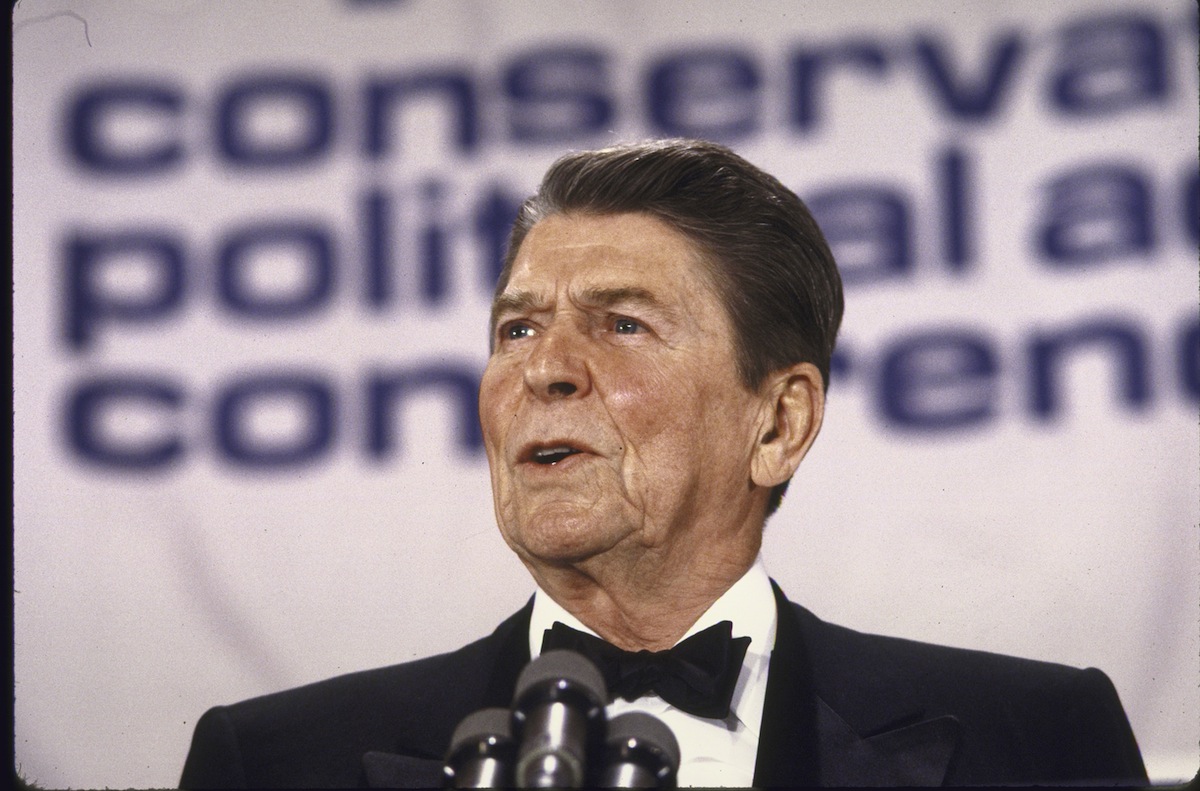
It’s no secret that the Conservative Political Action Conference (CPAC) loves Ronald Reagan. The agenda for this year’s event, which takes place this week, includes a screening of Ronald Reagan: Rendezvous with Destiny, the Ronald Reagan Reception and the Ronald Reagan Dinner.
Sure, the late president was conservative and CPAC is a conservative conference, but their connection goes deeper than that: not only did Reagan speak at the first ever CPAC in 1974, he also provided part of the impetus for its creation.
The key to the special relationship between the event and the politician is timing. When the first CPAC took place, Reagan’s position among conservatives was not the established spot on a pedestal that he occupies today. Rather, he was the subject of severe regret for many. And the reason for that regret was obvious: Richard Nixon.
As TIME explained later that spring, then-President Nixon had seemed like a safe bet, and proved to be anything but:
The alliance between Richard Nixon and the nation’s conservative ideologues has never been automatic or assured. His 1960 campaign, in which he compromised with New York Governor Nelson Rockefeller on matters like civil rights and medical care for the aged, caused many conservatives to worry that he was far too willing to sacrifice philosophical principles for the sake of votes. They backed him for the Republican nomination in 1968 largely because he seemed more likely to win than their preferred candidate, California Governor Ronald Reagan. Explains Texas Senator John Tower: “Having gone through the debacle of 1964 with Barry Goldwater, we were not going to be lemmings again.” Moreover, according to Tower, “we received certain assurances from Nixon. So we felt that his inclination would be in our direction, even though he was never really regarded as one of us.”
…Now, more and more conservatives are uneasy about the President. They were pleased by some of his actions, such as his move to end the antipoverty program, his stance against busing, his Supreme Court appointments, his efforts to scale down the Federal Government’s activity and return revenues to the local levels. But they were dismayed by many of his other moves, including the wage-price controls that he imposed and the rapprochement with Peking. Says Frank Donatelli, executive director of the Young Americans for Freedom: “He certainly is not a conservative President so far as we are concerned. We do not see how his health-care program is much better than [Senator Edward] Kennedy’s. His conception of detente is riding roughshod over our friends, ruining our defense posture and ignoring the basic human rights of people within the Soviet Union.”
In the months that followed, Watergate would prove that distrust of Nixon well-founded, but it was already there when CPAC was held—and, in fact, much of that first conference was devoted to that very point. As the New York Times noted in its coverage, the message was “Richard Nixon has done us dirt” and a prominent political consultant added that “a substantial majority [of attendees] wishes the President would just go away.”
Meanwhile, the decision not to back Reagan seemed more and more of a mistake. He was chosen as a speaker at the very first CPAC, receiving what the Times called a “rousing, placard-waving welcome.” Reagan has been, as long as CPAC has existed, a symbol of the idea that compromising on conservatism is a mistake. After all, choosing the more liberal, electable candidate over him had resulted in the worst presidential disaster in American history.
In the years that followed, the relationship between Reagan and CPAC, established even before that very first meeting, grew. Reagan assumed the presidency and CPAC became a major force in conservative politics, each helping the other along. As TIME put it in 1986, “Speakers and delegates alike credited Reagan with having permanently changed the national agenda to make the conservative voice not just relevant but dominant.”
Read original coverage of CPAC 1986, including Reagan’s speech, here in the TIME Vault: The Tide Is Still Running
More Must-Reads from TIME
- Why Biden Dropped Out
- Ukraine’s Plan to Survive Trump
- The Rise of a New Kind of Parenting Guru
- The Chaos and Commotion of the RNC in Photos
- Why We All Have a Stake in Twisters’ Success
- 8 Eating Habits That Actually Improve Your Sleep
- Welcome to the Noah Lyles Olympics
- Get Our Paris Olympics Newsletter in Your Inbox
Write to Lily Rothman at lily.rothman@time.com